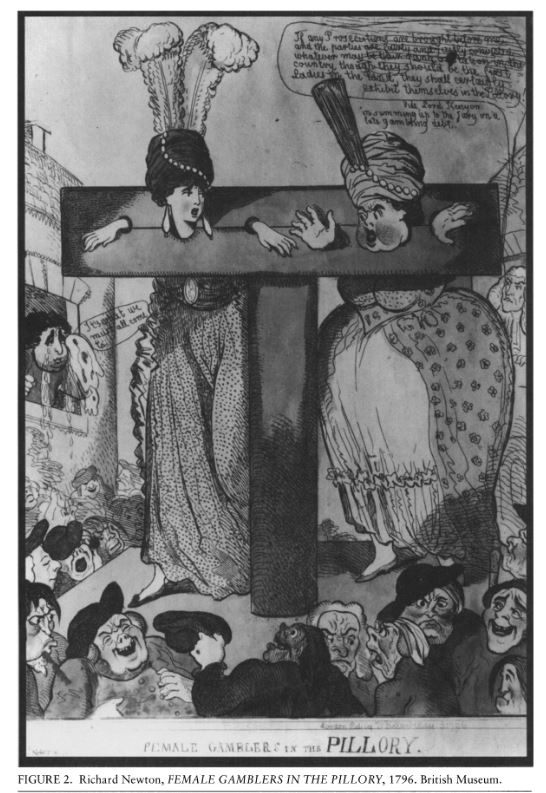Regency Reader Question
I often read of men adjourning to the card room at a ball, were women allowed to play cards? Would it have been taboo for women to play cards with men at a house party? What card games were typically played at social events?
| Source of Question | Research |
| Additional comments | Thanks so much for providing wonderful insight to a time period I love to read about. |
Thank you, Ann F. for the question and for being a Regency Reader!
This is actually a fascinating question to unpack and involves a lot of gender, politics and socio-economic layers that are too exhausting for a blog post. I have included some of the literature on the topic, cited and not, below for further reading.
As any Regency Reader knows, the Regency was all about the excesses. Including gaming or gambling. That often involved card playing, bets at the clubs, and haunting gaming halls. This type of heavy gaming was mostly engendered as masculine, and was scandalous when women occasionally cross the gendered line (like Lady Lade). Says Russell (2000): “The status of high-stakes gambling as a kind o theater…that…had its own elaborate codes and rituals of performance” (p. 483) including costumes for the gaming table devised at Almack’s.
However, aristocratic women were not immune to the lure of the gaming table. Georgian Duchess of Devonshire was said to play very deep (Russell, 2000). Not able to gamble in the men only clubs like White’s and Brook’s, women took to gaming in private houses “often under the pretext of a musical concert or an evening of amateur theatricals” (Russell, 2000, p. 484). Russell goes on to discuss the Faro’s Daughters, or aristocratic women who ran Faro houses during the Georgian era and beyond. So women “certainly gambled and played card and dice, but apparently with less ferocity or tenacity as some men” (Pitt, 2012, p 14).
Almack’s is one card room that permitted women. Some house parties, balls, or other events (as mentioned above) may have also allowed for mixed company gambling and indeed, that may have been one of the allures to these events (Pitt, 2012). It would not be uncommon for company to be mixed, after dinner, in the drawing room and sit down to play cards or other games. The gaming stakes, however, would likely be for pennies or favors, rather than serious cash.
Whist was very popular with both sexes (Pitt, 2012) as was Quadrille (different, of course, from the dance). Loo and piquet, were two other popular games. Here is a list of various others, with instructions on play: http://eclectichomeschool.org/articles/article.asp?articleid=559
However, actual gambling was more complicated for women, particular for high stakes as there was a built in “perception…that women should not game because they had no legitimate way of paying their debts” (Pitt, 2012, p 53).
All of this mostly pertained to the Upper Orders. Middle and lower class women were granted even less privilege, and aside from ones already living on the edge of society, likely would not had the time, inclination or exposure to gamble. They may have played a no stakes game of cards, but more religious households would have frowned heavily on even that.
I hope this brief review answers your questions. Please keep the questions coming!
 Davidoff, L and C. Hall (2002). Family Fortunes. Routledge.
Davidoff, L and C. Hall (2002). Family Fortunes. Routledge.
Lannon, C. (2009). “Gambling and/on the Exchange: The Victorian Novel and the Legitimization of the Stock Market.” Dissertation. Retrieved from: https://dlib.bc.edu/islandora/object/bc-ir:101859/datastream/PDF/view
Pitt, A. (2012). “A Study of Gamblers and Gaming Culture in London, c. 1780-1844: emerging strategic reasoning in a culture of conspicuous consumption. Dissertation. Retrieved from: https://core.ac.uk/download/pdf/9848223.pdf
Russell, G. (2000). “Faro’s Daughters”: Female Gamesters, Politics, and the Discourse of Finance in 1790s Britain. Eighteenth-Century Studies, 33(4), 481-504. Retrieved from http://www.jstor.org/stable/30054159
Sturtz, L. (1996). The Ladies and the Lottery: Elite Women’s Gambling in Eighteenth-Century Virginia. The Virginia Magazine of History and Biography, 104(2), 165-184. Retrieved from http://www.jstor.org/stable/4249563
Other Regency blogs on gambling:
https://janeaustensworld.wordpress.com/2008/11/30/gambling-an-accepted-regency-pastime/
http://www.riskyregencies.com/2005/10/10/regency-gambling-and-card-games/











